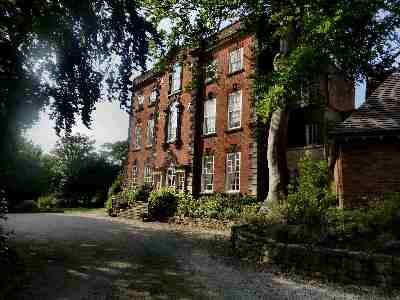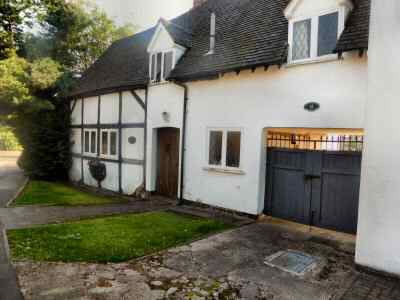SPONDON

INFORMATION
Where is it? – Spondon is off the A52 Derby to Nottingham road which bisects it three and a half miles to the east of Derby (SK401361).
What to do? – Obtain a visitor guide pamphlet and take a walk around Spondon. – Visit West Park Meadow, located between Spondon and Chaddesden, which was declared a Local Nature Reserve in 1998. It is an important area of open space, which can easily be reached by several footpaths. – Enjoy a walk around the Moravian settlement at Ockbrook. A product of the 18th century, with its delightful terrace of red-brick Georgian buildings and strikingly attractive church.
Where to eat? – There are several pubs, cafes and restaurants in and around Spondon. – The Clock Bistro in Chapel Side, Chapel Street is a popular venue – for more information www.clockbistro.co.uk
Other places to visit
Enjoy a visit to Elvaston Castle Country Park, the first Country Park to be opened in Britain. It is set in 200 acres of parkland with an ornamental lake, extensive gardens, stony grottoes, rock archways and many other interesting features. Open daily. – Try a visit to Erewash Museum at Ilkeston which exhibits artefacts that cover a period of over 10,000 years. All displayed in this splendid little museum. Displays are changed regularly and every effort is made to ensure children, as well as adults, enjoy their visit. – Shipley Country Park contains over 600 acres of attractive parkland with lakes, woodlands and miles of footpaths and bridleways. There is a Visitor Centre with a countryside gift shop and cafe.
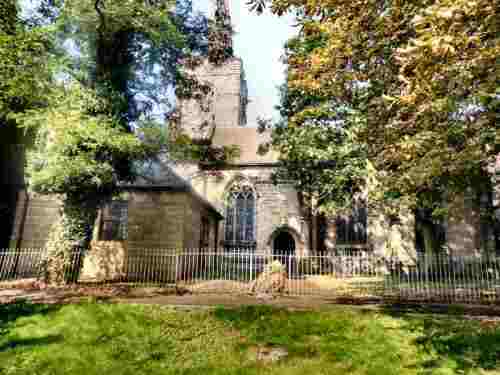
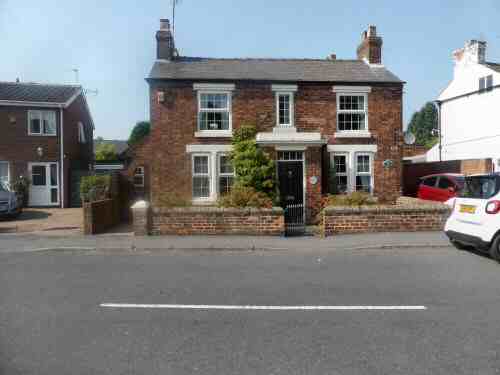
PROFILE
Spondon’s name is thought to derive from the fact that it is sited on a Spoon-shaped Hill. Situated approximately three and a half miles east of Derby. It retained its village status until it was officially absorbed into Derby’s city boundaries in 1968. There is though still the feel of a village rather than that of a suburb of Spondon. And most of the inhabitants refer to it as a village.
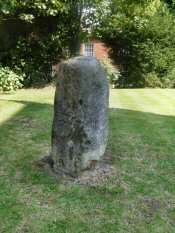
The local history society is very active and has produced several excellent publications. Assembled a large collection of old photographs and memorabilia. All of these give Spondon a clear identity as somewhere that is not just another part of Derby.
History
Originally, Spondon was a quiet farming village, dating back to at least Anglo-Saxon times. Following the Norman Conquest, the manor of Spondon was awarded to Henry de Ferrers. Who became one of the largest landowners in the country. A descendant, William de Ferrers gave the church and manor to the Burton Lazars Monastery in Leicestershire. This led to the founding of a leper hospital in the hamlet of Locko. Situated about one mile to the north of Spondon. Today, Locko Hall and its impressive 300-acre park is the home of the Drury-Lowe family.
The greatest upheaval in the village’s history came in 1340. When Spondon was nearly wiped out because of a disastrous fire caused by a woman drying malt at the door of a furnace. The fire raged out of control and spread quickly in a high wind. The church was destroyed and almost all the houses suffered the same fate. Apart from one or two on the windward side of the fire. The devastation was so great that the villagers appealed to the King for support and he granted them relief from the payment of taxes.
The Malt Shovel Inn now stands on the site where the malting house once stood. As the fire originated from this point. It has led to the claim that it is the oldest site of any public house within Derby. The present inn has been rebuilt twice, parts of which date back to 1680.
Industry
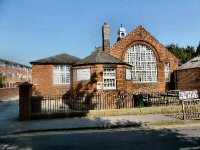
Following the fire, the village gradually recovered and although it remained for many years a predominantly farming community. Gradually other industries sprang up. These included basket making, and a timber yard (in what was then appropriately called Saw Pit Lane, now West Road). As well as a brickyard, a boot repairer and a blacksmith. The women were kept busy winding cotton onto bobbins. This was delivered weekly to the White Swan Inn from the mills at Darley Abbey.
Before the Industrial Revolution, Spondon became famous for making silk gloves. The silk was collected from Nottingham and a week later returned in the form of gloves. All the family were involved in this cottage industry and there were a large number of spinning frames in Spondon. Some of which were used to make silk stockings.
River Derwent
From 1916, until recent times there has been an industrial site on the banks of the River Derwent at Spondon. Originally the site was developed during the First World War to waterproof aircraft wings. It entered production under the name of the British Cellulose and Chemical Manufacturing Company. Later manufacturing under a variety of different names including British Celanese and Courtaulds. Following a takeover, it became the home of Acordis and employed over 800 people on its 360-acre site. It changed its name back to Celanese before its closure.
At its peak, the site was covered by five miles of roads, which crisscrossed the area. The factory had a workforce of over 20,000 people. It was a fantastic sight to see an army of people all leaving work at the same time, in what was then only a small village. Improvements in manufacturing processes and mechanisation led to significant reductions in the workforce in subsequent years.
Conservation Area
The ‘Old Village’ Conservation Area was designated in 1975, to protect the character and environment of that area. There are some fine Georgian houses in Spondon. In particular, The Homestead is a magnificent Grade I listed building, dated 1740. It is one of the finest Georgian buildings in Derbyshire. The house has been the home of some notable people. These include Dr James Cade, a Derby surgeon and descendant of Joseph Wright the celebrated Derby artist, and Sir Henry Fowler, Chief Engineer for the London Midland and Scottish Railway.
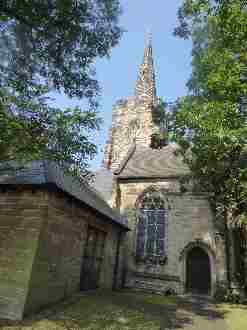
The gate piers at the entrance to where Field House, in Park Road, once stood are of a similar period to those at the former coach house to the Homestead. Also, on Park Road, facing The Green is a 16th-century merchant’s house, The Grange, with its original timber framing. On the opposite is 18th century Holly Cottage and further down the road Prospect House, a fine Georgian building. West Road contains several businessmen’s houses built in the late 18th and early 19th centuries. Along Locko Road just beyond the Vernon Arms, is Mill Row, formerly a row of stockingers’ cottages.
Religion
St Werburgh’s Church was heavily restored in 1826 and 1892. It retains its 14th-century tower and spire and in the churchyard, the medieval cross is now designated as a Scheduled Ancient Monument. The leper window is believed to have been used to enable lepers to view mass. While remaining segregated from the rest of the congregation. The Old Vicarage is now St Werburgh’s Nursing Home.
There have been Methodist Chapels in Spondon, since the beginning of the 19th century. The present chapel opened in 1934 and is to be found on the corner of Lodge Lane. On Chapel Street, the Jehovah’s Witness Hall now occupies the old Methodist Chapel of 1877.

